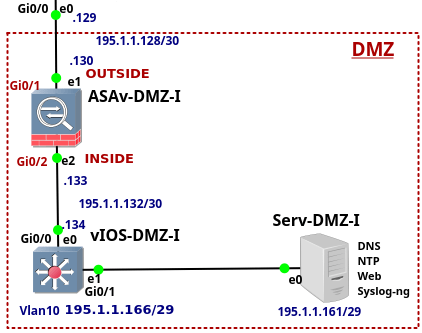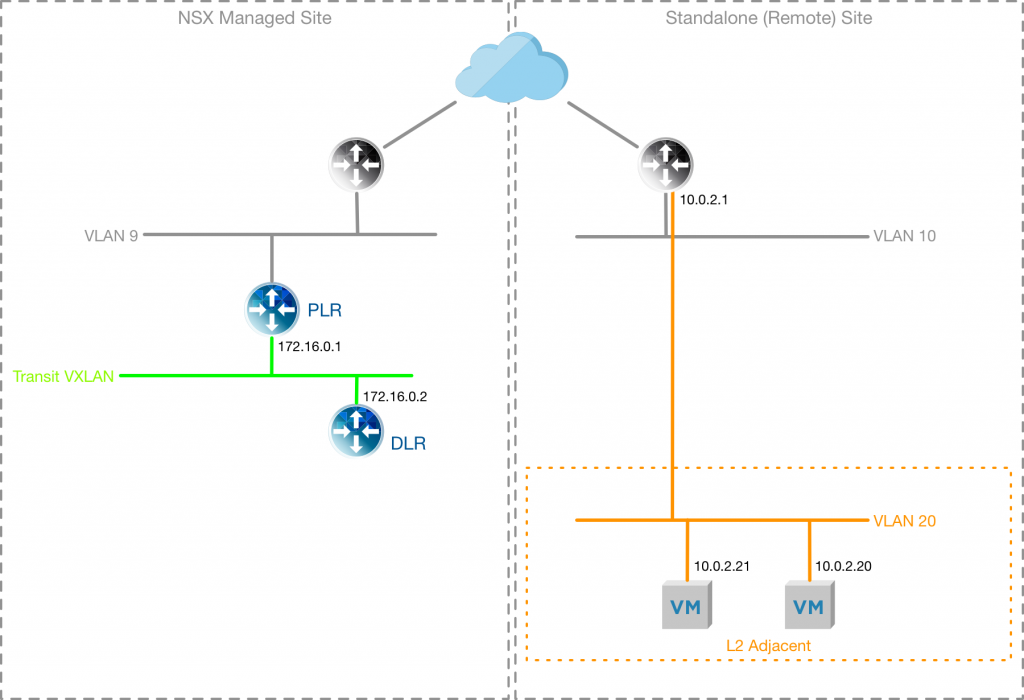Link Propagation 108
Welcome to Link Propagation, a Packet Pushers newsletter. Link Propagation is included in your free membership. Each week we scour the InterWebs to find the most relevant practitioner blog posts, tech news, and product announcements. We drink from the fire hose so you can sip from a coffee cup. A note from Greg Why Link […]Show 379: Grappling With Promise Theory
Mark Burgess, who developed the principles of Promise Theory as a way to model distributed systems, joins the Packet Pushers to explore how his ideas connect to networking and information systems. The post Show 379: Grappling With Promise Theory appeared first on Packet Pushers.Riverbed Gains Revenue Share in SD-WAN
 Cisco and VMware change the SD-WAN playing field.
Cisco and VMware change the SD-WAN playing field.
Nutanix Reports Strong Revenue, Buys Minjar, Plans Hyperconverged Cloud Domination
 Minjar sells a service that compares costs across public clouds.
Minjar sells a service that compares costs across public clouds.
U.S. Exascale Efforts Benefit in FY 2019 Budget
There was concern in some scientific quarters last year that President Trump’s election could mean budget cuts to the Department of Energy (DoE) that could cascade down to the country’s exascale program at a time when China was ramping up investments in its own initiatives.
The worry was that any cuts that could slow down the work of the Exascale Computing Project would hand the advantage to China in this critical race that will have far-reaching implications in a wide range of scientific and commercial fields like oil and gas exploration, financial services, high-end healthcare, national security and the military. …
U.S. Exascale Efforts Benefit in FY 2019 Budget was written by Jeffrey Burt at The Next Platform.
NSX Layer 2 VPN: Deploying for datacentre migrations
In my previous post, NSX Layer 2 VPN: Migrating workloads between Datacentres, I described the process and theory behind using an NSX Layer 2 VPN (L2VPN) to migrate workloads from a soon-to-be-retired VLAN backed datacentre, to an NSX Managed logical switch backed datacentre. In this post I will take you through the deployment of the L2VPN in my lab environment, following these high-level steps:
- Prepare the NSX Managed Site
- Deploy the Layer 2 VPN Server
- Prepare the Standalone Site
- Deploy the Layer 2 VPN Client
- Validate the Layer 2 VPN connectivity
Current lab environment
The Lab environment I am using currently reflects the diagram below, with two VMs deployed onto VLAN 20 within my “remote” site (my remote site is actually just a separate cluster from my “NSX Managed Site”, which is my workload cluster). In my NSX Managed site I have a Provider Logical Router (PLR) and Distributed Logical Router (DLR) configured.
Configure the NSX Managed Site
To prepare the NSX Managed Site the L2VPN-Server needs to be connected to a “trunk” interface, which allows multiple VLAN or Logical Switches to be configured as sub-interfaces, rather than having an interface in each VLAN/Logical Switch.
The Continue reading
OpenACC Developments: Past, Present, and Future
On today’s episode of “The Interview” with The Next Platform we talk with Doug Miles who runs the PGI compilers and tools team at Nvidia about the past, present, and future of OpenACC with an emphasis on what lies ahead in the next release.
Over the last few years we have described momentum with OpenACC in a number of articles covering everything from what it means in the wake of new memory options to how it pushes on OpenMP to develop alongside. Today, however, we take a step back with an HPC code veteran for the bigger picture and …
OpenACC Developments: Past, Present, and Future was written by Nicole Hemsoth at The Next Platform.
When Will BGP Become Unfashionable? – Video
If we're ever going to find a replacement for BGP, we'll need to build a community that draws interest and attention. Where will the next fashion come from?Is NAT a Bad Thing?
Peter Welcher examines the pros and cons of Network Address Translation and describes design scenarios.
Vodafone Finds Containers Drastically More Efficient Than VMs
 Resource savings with containers is pegged at around 40 percent.
Resource savings with containers is pegged at around 40 percent.
Stuff The Internet Says On Scalability For March 2nd, 2018
Hey, it's HighScalability time:

Algorithms described like IKEA instructions. Can anyone assemble these? (Algorithms and data structures)
If you like this sort of Stuff then please support me on Patreon. And please consider recommending my new book—Explain the Cloud Like I'm 10—to whole entire world.
- $75 million: Dropbox saved moving out of S3; 159 million: Spotify monthly active users; 80 million: more records added to Have I Been Pwned; 9%: universe expanding faster than predicted; $2,222,279: Warren Buffett won his long bet against hedge fund mangers; 60,000: Mayan houses found in Guatemala using LiDAR; $14.2 billion: PaaS revenue; ~180 million: years until first sun after the big whatever it was; $1,599: cost of stolen Extended Validation (EV) certificate; 8,000X: query speedup using GPU database; 2.4 million: Google requests to be forgotten; 6 minutes: time to IoT device attack on the internet; 103 million: tweets sent about the Olympics; 320,000: increase in Chloe Kim's twitter followers; 150 kg: acorns stored by woodpeckers in a telecom antenna; 0.14ms: Fsync performance on Intel PC-3700; Q: earliest known article on Wikipedia; 800Gbps+: memcached reflection/amplification attacks; Continue reading
Engineering versus Metaengineering
In my latest short take over at the Network Collective, I explain the difference between engineering and metaengineering.
The Modern Telco is Open Series, Part 1: Open Telco Framework Q&A
 Thanks to all who joined us for the first of The Modern Telco is Open Series, The Open Telco Framework. During the webinar, we saw how Red Hat’s open 5G architecture foundation helps modern telcos deploy new services (MEC apps, vRAN, IoT) – faster, economically and at massive scale. After the webinar, we had a live Q&A with... Read more →
Thanks to all who joined us for the first of The Modern Telco is Open Series, The Open Telco Framework. During the webinar, we saw how Red Hat’s open 5G architecture foundation helps modern telcos deploy new services (MEC apps, vRAN, IoT) – faster, economically and at massive scale. After the webinar, we had a live Q&A with... Read more →
SDxCentral’s Weekly Roundup — March 2, 2018
 Cisco forms IoT, 5G, and smart city partnerships; Softbank and Affirmed Networks strike an IoT agreement; VMware launches edge technology.
Cisco forms IoT, 5G, and smart city partnerships; Softbank and Affirmed Networks strike an IoT agreement; VMware launches edge technology.
Enterprise Network on GNS3 – Part 7 – DMZ
This is the last article from the series of the articles discussing configuration of the enterprise network. The article explains the configuration of Demilitarized Zone (DMZ). Our DMZ consists of three devices - ASAv-DMZ-I, a multilayer switch vIOS-DMZ-I and Serv-DMZ-I. All the devices in DMZ are run by Qemu hypervisor. The ASAv_DMZ-I device is Cisco Adaptive Security Appliance Software version 9.6.1 and it has assigned 2048 MB RAM by GNS3. The device vIOS-DMZ-I is Cisco vIOS-L2 version 15.2 and it has assigned 512 MB RAM by GNS3. And finally, the device Serv-DMZ-I is Linux Ubuntu 16.04.3 LTS with 1024 MB RAM assigned by GNS3. The server Serv-DMZ-I provides DNS, NTP, Syslog services for devices in DMZ and a public web service for all hosts in the Internet.

Picture 1 - Demilitarized Zone - DMZ
All devices located in DMZ have their IP addresses assigned from the subnet 195.1.1.128/25. The subnet 195.1.1.128/27 is further divided with /30 mask, creating 8 subnets suitable for point-to-point link configuration . Servers located in DMZ are assigned to different VLANs. Currently, there is only server Serv-DMZ-I deployed in DMZ and configured with the IP addresses Continue reading
Enterprise Network on GNS3 – Part 7 – DMZ
This is the last article from the series of the articles discussing configuration of the enterprise network. The article explains the configuration of Demilitarized Zone (DMZ). Our DMZ consists of three devices - ASAv-DMZ-I, a multilayer switch vIOS-DMZ-I and Serv-DMZ-I. All the devices in DMZ are run by Qemu hypervisor. The ASAv_DMZ-I device is Cisco Adaptive Security Appliance Software version 9.6.1 and it has assigned 2048 MB RAM by GNS3. The device vIOS-DMZ-I is Cisco vIOS-L2 version 15.2 and it has assigned 512 MB RAM by GNS3. And finally, the device Serv-DMZ-I is Linux Ubuntu 16.04.3 LTS with 1024 MB RAM assigned by GNS3. The server Serv-DMZ-I provides DNS, NTP, Syslog services for devices in DMZ and a public web service for all hosts in the Internet.

Picture 1 - Demilitarized Zone - DMZ
All devices located in DMZ have their IP addresses assigned from the subnet 195.1.1.128/25. The subnet 195.1.1.128/27 is further divided with /30 mask, creating 8 subnets suitable for point-to-point link configuration . Servers located in DMZ are assigned to different VLANs. Currently, there is only server Serv-DMZ-I deployed in DMZ and configured with the IP addresses Continue reading
